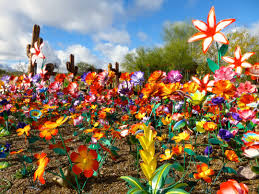Flowers have been a popular subject in painting for centuries, with artists capturing their beauty and essence through a range of techniques and styles. From delicate watercolors to bold oil paintings, flower paintings have stood the test of time and continue to inspire artists and art enthusiasts alike. In this ultimate guide, we will explore some of the top flower paintings throughout history and what makes them stand out.
“Sunflowers” by Vincent van Gogh
Vincent van Gogh’s “Sunflowers” is one of the most recognizable flower paintings in history. The painting features a vase of twelve sunflowers, each one captured in stunning detail and vibrant color. Van Gogh painted a series of sunflower paintings, but this one is particularly famous for its bold and lively composition. The thick brushstrokes and bright colors create a sense of energy and movement that is characteristic of van Gogh’s unique style.
“Water Lilies” by Claude Monet
Claude Monet’s “Water Lilies” series is another iconic example of flower paintings. The series features a collection of paintings depicting the artist’s garden pond, filled with lilies and other aquatic plants. The paintings are characterized by their soft, blurred edges and muted colors, which capture the peaceful and serene nature of the scene. Monet’s use of light and reflection creates a sense of depth and movement, making the paintings feel almost like windows into a peaceful world.
“Irises” by Vincent van Gogh
Vincent van Gogh’s “Irises” is another masterpiece that uniquely captures the beauty of flowers. The painting features a bouquet of blue and purple irises, arranged in a vase. The bold colors and thick brushstrokes create a sense of movement and energy, while the careful placement of each flower creates a sense of balance and harmony. The painting is considered one of van Gogh’s finest works and showcases his skill at capturing the essence of nature in his paintings.
“The Roses of Heliogabalus” by Lawrence Alma-Tadema
“The Roses of Heliogabalus” by Lawrence Alma-Tadema is a striking depiction of an ancient Roman banquet. The painting features a scene where the emperor Heliogabalus pours rose petals on his guests, drowning them in a sea of pink and red. Painting is notable for its vivid colors and intricate details, with each petal captured in exquisite detail. The painting is a testament to Alma-Tadema’s skill at creating realistic and dramatic scenes from history.
“Black-eyed Susans and Other Flowers in a Vase” by Georgia O’Keeffe
Georgia O’Keeffe’s “Black-eyed Susans and Other Flowers in a Vase” is a stunning example of her unique style of flower paintings. The painting features a simple arrangement of black-eyed Susans and other flowers, each one captured in intricate detail. O’Keeffe’s use of bold colors and strong contrasts creates a sense of depth and movement that is both modern and timeless.
“The Flower Carrier” by Diego Rivera
“The Flower Carrier” by Diego Rivera is a powerful and emotional depiction of a flower vendor in Mexico. The painting features a man carrying a large basket of flowers on his back, with a young child walking beside him. The painting is notable for its bold colors and strong contrasts, as well as its social commentary on the struggles of working-class people in Mexico. Rivera’s use of realism and emotional depth creates a sense of empathy and connection with the subject of the painting.
“Flaming June” by Frederic Leighton
“Flaming June” by Frederic Leighton is a stunning example of Victorian-era flower paintings. The painting features a woman draped in a flowing orange gown. Resting on a stone bench surrounded by lush foliage and orange poppies. Painting is characterized by its vibrant colors and intricate details, with each flower and leaf captured in stunning detail. The painting is a testament to Leighton’s skill at creating complex and beautiful compositions. That captures the essence of nature and the human form.
“Tulips” by Jeff Koons
Jeff Koons’ “Tulips” is a modern take on flower paintings, featuring a collection of bright, oversized tulips in a metallic finish. The sculpture is a testament to Koons’ skill at creating pop art-inspired pieces that challenge traditional notions of art and beauty. The shiny, reflective surface of the tulips creates a sense of movement and energy. While the bold colors and larger-than-life scale make the piece a true statement in any space.
“Poppy Field” by Claude Monet
Claude Monet’s “Poppy Field” is another iconic example of a flower painting from the master impressionist. The painting features a field of red poppies, swaying in the breeze under a blue sky. Monet’s use of color and light creates a sense of movement and depth. With each flower seemingly dancing in the wind. The painting is a testament to Monet’s ability to capture the beauty and essence of nature in his work.
“Flowers on a Windowsill” by Henri Matisse
Henri Matisse’s “Flowers on a Windowsill” is a beautiful example of the artist’s signature style. The painting features a collection of colorful flowers arranged on a windowsill. With a view of the outdoors in the background. Matisse’s use of bold colors and strong contrasts creates a sense of energy and movement. While the simple composition allows the beauty of the flowers to take center stage.
In conclusion
Flower paintings have been a popular subject in art for centuries. With each artist bringing their unique style and perspective to the genre. From bold and vibrant pieces to delicate and nuanced compositions. Flower paintings capture the essence of nature and the beauty of the human spirit. Whether you’re a lover of classical art or a fan of modern pop art. There’s a flower painting out there that will speak to your heart and inspire your soul.

